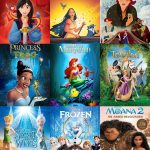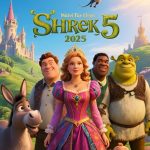🎬 THE REVENANT: BLOOD AND FROST (2025)

“Only the wild decides who lives.”
![The Revenant | Official Trailer [HD] | 20th Century FOX](https://i.ytimg.com/vi/LoebZZ8K5N0/maxresdefault.jpg)
The frontier returns — colder, crueler, and more merciless than ever. The Revenant: Blood and Frost (2025) resurrects the legend of Hugh Glass with staggering beauty and unrelenting ferocity. Leonardo DiCaprio steps back into the role that earned him his Oscar, but this time, the wilderness is not just his enemy — it’s his reflection.
The film opens in silence. Snow falls like ash, the wind howls like a grieving mother, and beneath the frozen wilderness, a man claws his way back from death. Glass is no longer merely surviving — he’s transcending. Every breath is a rebellion, every step a hymn to vengeance. His body bleeds, his spirit rages, and the frost itself seems to watch, waiting to see whether he will rise or be consumed.

Tom Hardy returns as John Fitzgerald, the man whose betrayal carved Glass’s destiny into ice. Hardened, haunted, and hollow, Fitzgerald stalks the edges of the world like a ghost burdened by his own survival. Their connection — predator and prey, sinner and soul — stretches taut across the white wasteland until it becomes a single thread of fate, ready to snap.
Yet into this bleak ballet of blood and snow enters a new force — Gal Gadot, as a mysterious wanderer known only as Eirwen. Her presence ignites the screen with a quiet, dangerous grace. She is neither savior nor villain, but something elemental: a spirit of mercy and fire in human form. Her eyes carry both salvation and temptation, and her alliance with Glass feels as fragile as the ice beneath their feet.
Director Alejandro G. Iñárritu returns to his elemental storytelling roots, capturing not just the savagery of man versus nature, but the poetry of endurance itself. The cinematography is breathtaking — vast, wordless, biblical. Every frame bleeds authenticity: the breath crystallizing in the air, the crunch of snow beneath boots, the slow drip of blood on frozen bark. The wilderness becomes its own living character — indifferent, divine, and eternal.
![The Revenant | film by González Iñárritu [2015] | Britannica](https://cdn.britannica.com/56/188356-050-7930C47E/Leonardo-DiCaprio-The-Revenant-Hugh-Glass-Alejandro.jpg)
The tension builds like a storm. The hunters become the hunted, the line between vengeance and madness blurs, and the land itself becomes an altar where man must confront the gods he no longer believes in. There are no heroes here — only survivors, stripped of morality, faith, and comfort, left to face the cold truth that nature forgives nothing.
DiCaprio delivers a performance of primal brilliance — less speech, more raw instinct. His eyes carry the story’s weight, a storm of pain and persistence behind every glare. Hardy counters him with a feral intensity, his every word a growl of regret and greed. Together, they form a duet of destruction — two beasts circling the same fire, each reflecting the other’s damnation.
Gadot’s character, meanwhile, is the soul’s whisper amidst the chaos. She brings balance to the brutality — her stillness disarms, her choices wound deeper than any knife. Through her, Blood and Frost finds its haunting question: can compassion survive where the world itself has turned to ice?

The score by Ryuichi Sakamoto weaves quiet dread and fragile hope into every moment — low strings that hum beneath the blizzard, a heartbeat lost in the howl of the wind. The silence between notes becomes as powerful as any dialogue, echoing the film’s theme: that survival is not about strength, but endurance of spirit.
By its end, The Revenant: Blood and Frost is less a sequel and more a requiem — for man, for nature, for all things that fight to stay alive when life itself seems impossible. The snow turns crimson, the wind falls still, and as Glass faces his fate beneath the frozen sun, one truth remains: the wild remembers everything.
Related movies:











